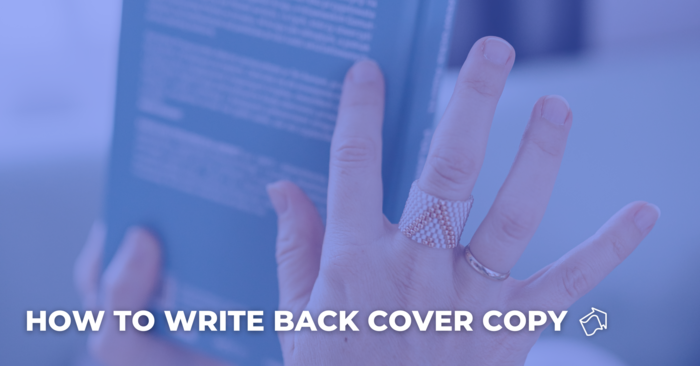A book’s front cover should be eye-catching and inviting enough to compel a reader to pick up your book. But, that’s only half the battle! Without enticing back cover copy, your book — with its beautifully designed front cover — may go right back on the bookseller shelves.
The back cover, though less glamorous than the front cover, does most of the work when it comes to convincing readers to pull out their wallet. So, it’s important to give it the attention it deserves. In this article, we’ll share a few tips for nailing your back cover copy.
Research what other authors in your genre have done.
After seeing what’s been working for your competition, you’ll have a better idea of the structure and style you should use in your own copy. This will vary depending on your genre. For example, fantasy and romance authors may rely more heavily on taglines to get their message across, whereas nonfiction writers may use bullet points for the same purpose.
Remember that researching does not mean copying. Even if you find inspiration from what other authors have done, you have to put your own spin on things!
Consider your target audience.
What are your readers looking for? What keywords will draw them in — and which ones will push them away?
For nonfiction authors, readers are typically looking to learn something new. Often, they are searching for an answer to a problem. Your copy should acknowledge the problem/question they have, and then promise to provide an answer. Tell your reader exactly what they will take away from the book.
For fiction authors, especially genre fiction, your copy might take inspiration from a movie trailer. You’ll want to showcase the suspense, drama, excitement and romance contained in your book’s pages. Readers should get a feeling for the emotional content of the book in addition to a basic understanding of the plot.
Start drafting.
As you begin drafting options for your copy, try to fit everything into one or two paragraphs and aim for 200-250 words. If you go over this limit, your potential buyer may feel overwhelmed.
Include a tagline.
A tagline is an optional way to hook your reader before diving into the full description. A tagline can be a short descriptive sentence or a memorable quote or phrase from the book. Here are a few examples:
From Sarah Winman’s “Tin Man”:
This is almost a love story.
But it’s not as simple as that.
From Ta-Nehesi Coates’ “The Water Dancer”:
A magical gift. A devastating loss.
An underground war for freedom.
Fom Lois Lowry’s “The Giver”:
“I have a great honor,” The Giver said. “So will you. But you will find that it is not the same as power.”
From Min Jin Lee’s “Pachinko”:
“There could only be a few winners, and a lot of losers. And yet we played on, because we had hope that we might be the lucky ones.”
All of these taglines are short and snappy, capturing the reader’s attention, and encouraging them to read on.
Include a review quote.
Either instead of, or in addition to, a tagline, you might include a review quote or testimonial from a respected source. This may come from a well-known author in your genre, from an expert in your field, or from a trusted industry source like Publishers Weekly or Kirkus.
Consider your author bio and headshot.
If you have room, you might feature a short bio along with your professional headshot on your back cover.
An author bio is most important for nonfiction authors, as this will give you the opportunity to establish your credibility and expertise. Be sure to state clearly what experience you have and why you are a good fit for writing on this topic. Space will be limited, so aim for 1-2 sentences or roughly 25 words.
Get feedback from your network.
At long last, you have a draft (or two or three!) complete. Consider sending it to your writing group or network of trusted friends for their feedback. Authors learn best from each other, so don’t be afraid to put yourself out there!

Jackie Karneth is a publicist with Books Forward is an author publicity and book marketing firm committed to promoting voices from a diverse variety of communities. From book reviews and author events, to social media and digital marketing, we help authors find success and connect with readers.
Interested in what’s possible for your book sales and building readership? Check out our services, tell us your goals, and get a customized publicity campaign tailored just for you.

